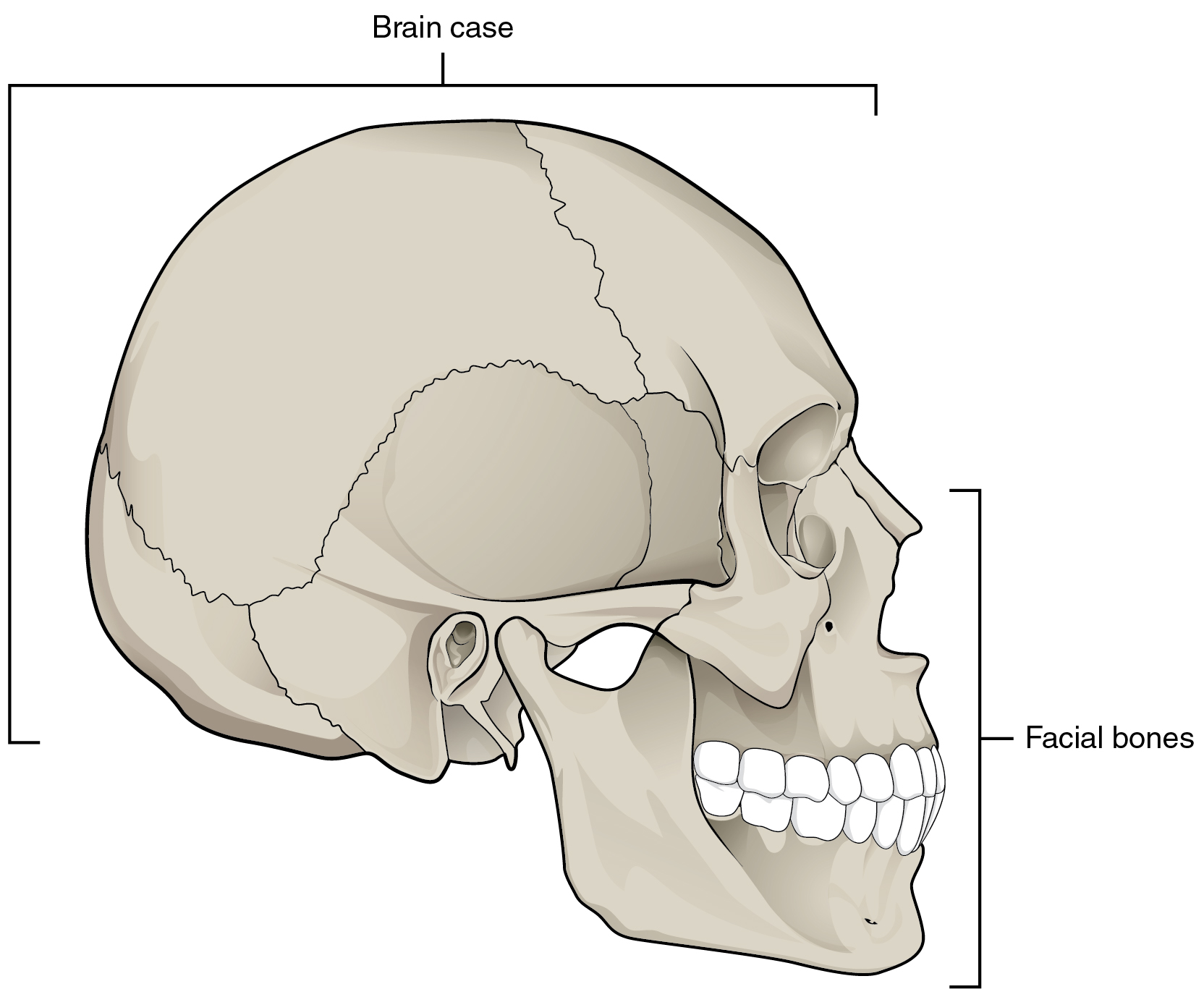To ensure its safety, the brain is enclosed within a thick, bony structure - the skull. Throughout your life, you will bump your head several times, but your brain will stay unharmed; the skull's purpose is to protect the brain. The cranium is the part of the skull enclosing the brain, but not including the face or jaws. The cranium is comprised of eight flat bones connected at sutures (immovable joints). These plate-like bones grow over time. A baby's skull is extremely fragile; you can even feel the sutures on a baby's head. The soft spot at the top of the head is where the sutures all meet. Eventually, this spot closes over and the cranium is sealed shut. In addition to the cranium, the fourteen facial bones also make up the skull.
The outermost layer is the dura mater, a tough fibrous connective tissue that connects the meninges to the outer bony structure. The dura mater in the brain consists of two layers - the outer periosteal layer and the inner meningeal layer. The spinal cord lacks the periosteal layer. The second layer underneath the dura mater is the arachnoid mater. Notice the resemblance between "arachnoid" and "arachnid". This layer gets its name for its web-like crisscrossing blood vessels that circulate blood around the brain. The innermost layer is the pia mater, which fits tightly around the whole brain and spinal cord. It even goes down into the sulci of the cerebral cortex. The pia mater contains blood vessels that supply the brain with glucose and oxygen.

________
Image Credit:
(1) OpenStax College. “Skull Cranium and Facial Bones.” Wikimedia Commons, 16 May 2013, commons.wikimedia.org/wiki/File:703_Parts_of_Skull-01.jpg.
(2) “Layers of the Meninges.” Wikipedia, en.wikipedia.org/wiki/Meninges.
(3) OpenStax. “Cerebrospinal Fluid.” Wikipedia, 18 May 2016, en.wikipedia.org/wiki/Cerebrospinal_fluid.


Comments
Post a Comment